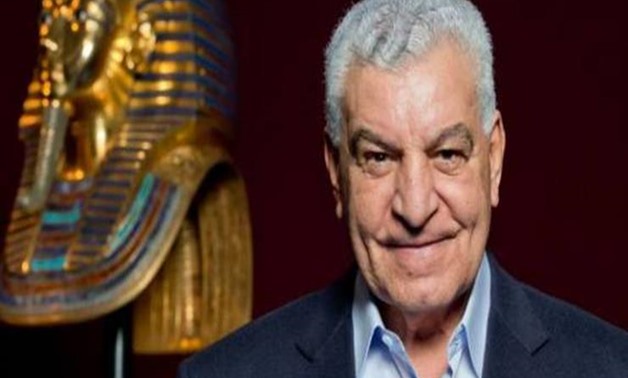
FILE - Hawass and Tutankhamun mask
CAIRO – 17 September 2019: Acclaimed archaeologist Zahi Hawass has finished the script for Tutankhamun Opera, set to debut in the opening ceremony of the Grand Egyptian Museum in late 2020.
Hawass announced that one of the most important scenes in Tutankhamun Opera revolves around Nefertiti's attempt to kill Tutankhamun and snatch the throne for one of her six daughters.
Composed by Zamboni, the opera's score will be completed this December, according to Hawass.
Hawass added that November 4, 2022 will be the centenary of the discovery of Tutankhamun tomb, who is an important king to the whole world not Egypt only.
Hawass stated that the DNA tests will reveal a lot of information about the death of Tutankhamun and that he will announce to the whole world in 2020 how the golden king died.
Hawass said in an interview with Italia 1 Channel that the temporary exhibition of King Tutankhamun currently on display at the Grande Halle La Villette in Paris broke the records of turnout of the French cultural exhibitions.
It is the most visited exhibition in France, where the total number of registered visitors so far has reached 1.5 million, as recounted by Hawass.
In his interview with the Italian channel, Hawass revealed a number of important facts about the family of the Golden Pharaoh, announcing that his father is King Akhenaten and that the mummy of his mother is located at tomb number 35 where the grandmother of Tutankhamun, Tiye, was buried.
Hawass added that Tutankhamun was suffering from lack of blood reaching the feet, flatfoot and malaria.
Tutankhamun was born in the 18th Dynasty, around 1341 B.C., and was the 12th pharaoh of that period.
Tutankhamun did not accomplish much himself; he was placed on the throne when he was a child, and Egypt’s prosperous era was beginning to decline with the rise of Pharaoh Akhenaten and his new cult.
Sir Howard Carter, British archaeologist and Egyptologist, had made it his life’s quest to find the tomb of King Tutankhamun.
When Carter had begun to work in Egypt in 1891, most of the documented Pharaohs had their tombs discovered. One, however, proved to be elusive; King Tutankhamun, whose resting place had yet to be found and who Egyptologists knew very little about.
With the end of World War I, Carter made it his goal to be the first to uncover the tomb of Tutankhamun. Carter had worked in Egypt for 31 years since he was 17, using his skills as an artist to copy inscriptions from walls.
He would then become appointed inspector-general of monuments in Upper Egypt. In 1907, he started to work for George Herbert, the fifth earl of Carnarvon, who would aid him in his quest to uncover the lost tomb of Tutankhamun.
Carter was certainly dedicated, spending massive amounts of money and time in order to track down where the tomb might lie.
With Lord Carnarvon as his sponsor, he began working earnestly at excavating the Valley of Kings. Alas, even after five years of work, Carter wasn’t able to report back on anything substantial.
He refused to give up however, tirelessly working to fulfil his quest, and soon enough, Carter would be rewarded beyond his imagination.
The discovery of steps beneath the sand on November 1, 1922 was a breakthrough for Carter. At long last, his tireless search for Tutankhamun would finally bear fruit.
Carter announced the discovery on November 6, and it took three weeks until he could begin work on excavating into the tomb.
Workers exposed all of the steps and the sealed doorway into the tomb, which at one point had been broken in by tomb robbers but resealed again, leading to hope that the contents had not been plundered.
Carter finally entered on November 25, finding evidence of resealed holes but noting that it had likely been thousands of years since anyone had entered again.
When Carter made a hole inside the sealed door and peeked inside, he was left astounded. Gold flooded his senses, and animal statues, rich perfumes, piles of ebony, childhood toys and the Pharaoh himself adorned the room alongside countless other treasures.
It was a bounty of riches the likes of which had never been seen before. Carter couldn’t have anticipated this finding in his wildest dreams.

Comments
Leave a Comment